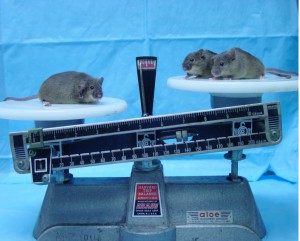 Can putting a price tag on childhood obesity propel treatment and prevention efforts into comprehensive action? Perhaps, says David Ludwig, MD, PhD, of Boston Children’s Hospital.
Can putting a price tag on childhood obesity propel treatment and prevention efforts into comprehensive action? Perhaps, says David Ludwig, MD, PhD, of Boston Children’s Hospital.
Although the U.S. Task Force on Childhood Obesity set a goal of dropping obesity prevalence among youth to 5 percent by 2030, efforts have failed to make a significant dent. Recent data indicate only slight dips in obesity prevalence among 6- to 19-year-olds in some states. And other data show that the prevalence of extreme obesity in children continues to rise.
With nearly 20 percent of U.S. children tipping the scales as obese, policymakers need not only to act but also to justify the investment in childhood obesity treatment and prevention programs.
Duke University researchers offered a helping hand in a review article in the April 7 online Pediatrics, estimating the incremental lifetime direct medical cost of childhood obesity. Their economic model showed a $19,000 incremental lifetime medical cost of an obese child relative to a normal-weight youth.
Ludwig, who directs the New Balance Foundation Obesity Prevention Center Boston Children’s Hospital, provides insights into the next steps. Full story »
 Schools have manned the front lines in the battle against childhood obesity. Through the Healthy, Hunger-Free Kids Act of 2010, First Lady Michelle Obama has promoted low-cal lunches, fresh produce and more. Now, she hopes to ban junk food and soda marketing in schools.
Schools have manned the front lines in the battle against childhood obesity. Through the Healthy, Hunger-Free Kids Act of 2010, First Lady Michelle Obama has promoted low-cal lunches, fresh produce and more. Now, she hopes to ban junk food and soda marketing in schools.
Are these efforts enough to turn the tide? Offering healthy foods and promoting physical activity at school may not be enough to negate the impact of other unhealthy influences in students’ homes and neighborhoods, according to Tracy Richmond, MD, MPH, of Boston Children’s Hospital’s Division of Adolescent Medicine.
Richmond recently published a study in PLOS One that looked at how a school’s physical activity or nutrition resources might influence fifth grade students’ body mass index (BMI).
The study focused on 4,387 students in Birmingham, Ala., Los Angeles and Houston. “We wanted to find out if certain schools look ‘heavier’ because of their composition—meaning that kids at higher risk of obesity, like African American girls or Hispanic boys, cluster within certain schools—or whether something structural in the school influences BMI, like the facilities or programs offered,” explains Richmond. Full story »

Obesity may set off innate immune factors that inflame the lungs.
Both asthma and obesity have surged in recent decades, and a growing body of literature is linking the two conditions. Various explanations have been proposed: One recent study suggests that hormonal factors in obesity may regulate airway diameter; another suggests that obesity activates asthma-related genes.
“Why obesity predisposes a person to asthma has been a real puzzle,” says Dale Umetsu, MD, PhD, who recently researched the problem with Hye Young Kim, PhD, and other colleagues in the Division of Allergy and Immunology at Boston Children’s Hospital. “Our goal was to find the connection between these two problems, which occur in both children and adults, and to explore possible new treatments.”
The team’s research indicates that obesity alters the innate immune system—the body’s first responder to infection—in several ways, resulting in lung inflammation. Published earlier this month in Nature Medicine, their work also suggests a completely new, “druggable” approach to treating patients with obesity-associated asthma, for whom standard asthma drugs often work poorly. Full story »
 The scales may not be tipping up quite so precipitously for some low-income preschoolers. So says a recent report from the Centers for Disease Control and Prevention (CDC). Bucking the previous trend, 19 states saw small decreases in obesity rates among preschoolers between 2008 and 2011, while rates held steady in another 20 states. Is this cause for celebration, cautious optimism or concern?
The scales may not be tipping up quite so precipitously for some low-income preschoolers. So says a recent report from the Centers for Disease Control and Prevention (CDC). Bucking the previous trend, 19 states saw small decreases in obesity rates among preschoolers between 2008 and 2011, while rates held steady in another 20 states. Is this cause for celebration, cautious optimism or concern?
Perhaps all of the above, says David Ludwig, MD, PhD, director of the New Balance Foundation Obesity Prevention Center Boston Children’s Hospital. “The report is a small, but encouraging, sign after nearly half a century of bad news.”
The latest data, along with several other reports, are raising hopes that the era of continually rising obesity rates may be drawing to a close. But most epidemics aren’t halted by a small crook in the prevalence curve. In fact, containing the obesity curve will require more muscle from federal decision makers, Ludwig contends. Full story »

Obesity is more common among children with sickle cell disease than thought. Why?
Ask many doctors about their image of a child with
sickle cell disease (SCD), and they’ll describe a short, skinny child, perhaps almost malnourished. For decades, that image was accurate.
That perception needs to change, though. A group of sickle cell specialists from hospitals in New England—members of the 11 institutions in the New England Pediatric Sickle Cell Consortium (NEPSCC)—recently made a surprising observation: Nearly a quarter of children with SCD are overweight or obese. The question is, why?
The answer may start with their red blood cells (RBCs). Full story »

Could the tendency toward weight gain in the mouse at left help explain some human obesity?
Two mice scurry around in an enclosure crossed through with light beams. The beams track their movement to measure their energy expenditure, along with the amount of oxygen they breathe in and carbon dioxide they exhale. The mice, who are siblings, are equally active and are held to the same diet, but there’s one critical difference: One mouse is noticeably heavier than the other.
“These [heavier] mice aren’t burning the fat,” says Joseph Majzoub, MD, chief of endocrinology at Boston Children’s Hospital. “They’re somehow holding onto it.”
In fact, the mice have to be underfed by 10 to 15 percent just to stay as slim as their siblings. Their experiences seem to parallel those of people who complain of gaining weight even when they don’t eat more than others. When allowed to eat as much as they want, the mice quickly begin to eat three to four times as much as the others and balloon to more than twice their size. Full story »

(Flickr/Anonymous Account)
This post is third in a series on obesity. Read last week’s posts on food addiction and what it means to define obesity as a disease.
The goal of any community health intervention is for individuals to achieve daily lifestyle goals in a way that realistically takes into account their cultural backgrounds, neighborhoods, families and home lives. For overweight or obese adolescents, these intimate surroundings play a pivotal role in allowing healthful behaviors to take root.
Research teams at Boston Children’s Hospital and suburban affiliate Wareham Pediatrics are conducting a study that lets adolescents collaborate with their doctors online to improve their weight. Videoconferencing technology, provided by Boston Children’s Telehealth Program, brings services directly to subjects in their homes.
“We’re bringing high-quality interventions directly to kids in the community where they live and simultaneously learning about the community itself,” says Cara Ebbeling, PhD, associate director of the New Balance Foundation Obesity Prevention Center at Boston Children’s Hospital, and one of the leading researchers. “For example, we are looking at what grocery stores are located in the community and what opportunities exist for physical activity.” Full story »
Are sugary foods fueling addiction?(Incase/Flickr)
Is there such a thing as food addiction? A study using brain imaging suggests that high-glycemic foods may trigger the same brain mechanism tied to substance addiction.
A team led by David Ludwig, MD, PhD, director of the New Balance Foundation Obesity Prevention Center at Boston Children’s Hospital, found that consuming highly processed, rapidly digested carbohydrates can cause excess hunger and stimulate brain regions involved in reward and cravings. These findings suggest that limiting such “high-glycemic index” foods could help obese individuals avoid overeating.
Published this week in The American Journal of Clinical Nutrition, the study investigated how food intake is regulated by dopamine-containing pleasure centers of the brain.
“Beyond reward and craving, this part of the brain is also linked to substance abuse and dependence, which raises the question as to whether certain foods might be addictive,” says Ludwig. Full story »
Obesity in the U.S., 2010: Percentage of people with a BMI over 30. (Wikimedia Commons)
Obesity is moving up in the world: After much debate, the American Medical Association (AMA) has
elevated it from a condition to a disease. Though the decision has sparked provocative discussion in the medical field, delegates from the American Academy of Pediatrics (AAP), the American Academy of Family Physicians, the American Association of Clinical Endocrinologists and the American Society of Bariatric Physicians are in support.
But can obesity’s new nomenclature actually impact treatment, especially for children?
“It’s a hard issue,” says Shari Nethersole, MD, medical director of Community Health at Boston Children’s Hospital. “In our health system, diseases are more incorporated into systems of care and get better coverage.”
On the other hand, she hopes the new definition doesn’t imply that because it’s a disease, obesity has to be a lifelong thing. Full story »

What you like on Facebook might say something about how obese your neighborhood is. (Dry Martini/Wikimedia Commons)
If one of my Facebook friends were to look through my list of “likes,” they’d find that I’m interested in music, cars, science and photography, among other things (and not necessarily in that order).
But if a researcher were to look across Boston at what people who are like me like—and post and share—on Facebook, a snapshot of data could tell them something else: roughly how obese metro Boston is.
That’s essentially what John Brownstein, PhD, and Rumi Chunara, PhD, concluded in a study recently published in the journal PLoS ONE. In it, they combined Facebook interest data—an aggregate of what people “like,” post on their timeline or share on others’ timelines—with health survey data to geographically correlate activity or television interests with obesity rates. Full story »
 Can putting a price tag on childhood obesity propel treatment and prevention efforts into comprehensive action? Perhaps, says David Ludwig, MD, PhD, of Boston Children’s Hospital.
Can putting a price tag on childhood obesity propel treatment and prevention efforts into comprehensive action? Perhaps, says David Ludwig, MD, PhD, of Boston Children’s Hospital.












